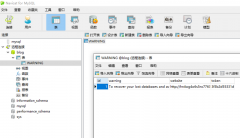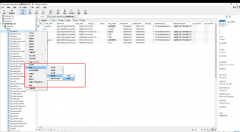spring boot项目application.properties文件存放及使用介绍
时间:2023-12-07介绍
application.properties是SpringBoot项目中常用的一种配置文件,可以用来定义项目的各种属性值,其中包括:数据库链接信息、各种组件的属性以及其他一些自定义属性值等等。本文将对application.properties的存放位置、使用方法以及示例进行详细的介绍。
存放位置
在一个SpringBoot项目中,application.properties文件一般放置在src/main/resources目录下的config或者META-INF目录下,但是SpringBoot同样支持application.yml、application.xml等多种配置文件类型,开发者可以根据需要自行选择。
使用方法
在使用过程中,我们需要在pom.xml文件中加入spring-boot-starter,这样spring-boot项目才能进行相关操作和使用。在application.properties文件中,配置项的格式是key=value,其中=前后不能有空格。
下面是一个示例:
# 数据源相关配置
spring.datasource.url=jdbc:mysql://localhost:3306/test
spring.datasource.username=root
spring.datasource.password=123456
spring.datasource.driverClassName=com.mysql.cj.jdbc.Driver
在这个示例中,我们定义了数据源的URL、用户名、密码和驱动名称。
另外,我们还可以在application.properties中配置SpringBoot的默认行为,例如server.port默认值为8080,如果需要更改端口号,只需要在文件中添加如下配置:
# 修改SpringBoot默认端口
server.port=8888
示例
下面是一个带有自定义属性值的简单例子:
# 统一配置类型
app.type=prod
# 邮箱配置
mail.host=smtp.qq.com
mail.port=587
mail.username=xxxx@qq.com
mail.password=xxxx
mail.fromAddress=xxxx@qq.com
# 第三方客户系统
client.authUrl=https://example.com/api/auth
client.baseUrl=https://example.com/api
client.apiConfig={\"timeout\": 3000}
在这个示例中,我们定义了app.type的类型为生产环境(prod),定义三个邮件服务器的配置、第三方客户系统相关配置,其中client.apiConfig是一个自定义的json属性值。
总结
本文介绍了application.properties的存放位置、基本使用方法以及示例。了解这些,在开发SpringBoot项目中,可以更加灵活高效地使用配置文件来管理项目中的各种属性。
 记录一次mysql数据库被黑删库遭比特币勒索的教训起因是想用服务器上的一个数据库访问其他数据库的权限,就直接按照网上教程改了mysql库里的user表的权限,可能是哪里权限修改问题,也没太在意,到了第二天发现网站登录不
记录一次mysql数据库被黑删库遭比特币勒索的教训起因是想用服务器上的一个数据库访问其他数据库的权限,就直接按照网上教程改了mysql库里的user表的权限,可能是哪里权限修改问题,也没太在意,到了第二天发现网站登录不 MySQL提示某表is marked as crashed and last (automatic)repair fai错误分析: 此错误为表损坏,修复即可。一般原因为服务器突然断电,而有程序还在往表里写数据。或者表的数据很大。避免浪费时间去修表。注意服务器操作时停掉数据库。另外
MySQL提示某表is marked as crashed and last (automatic)repair fai错误分析: 此错误为表损坏,修复即可。一般原因为服务器突然断电,而有程序还在往表里写数据。或者表的数据很大。避免浪费时间去修表。注意服务器操作时停掉数据库。另外